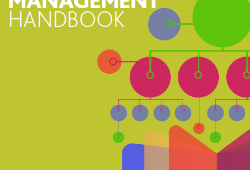
Lazard Asset Management’s (LAM) director of ESG data and analytics Gregory Van Droogenbroeck received a baptism of fire when he shifted to the investment giant from technology behemoth Bloomberg. The day he joined the company Russia invaded Ukraine, catalysing an existential rethink of some of the assumptions that had been built into the ESG project.
As that reappraisal added momentum to a brewing anti-ESG movement, Van Droogenbroeck could have found himself in a situation where he would have to parse the reshaped sustainability landscape into a new data approach to drive LAM’s investment strategy.In fact, it wasn’t war, a backlash or even the Russian invasion’s partial rehabilitation of once censured industries like fossil fuels or armaments that gave him headaches. It was, predictably, ESG data’s reliably eccentric characteristics that has kept him on his toes.
Coming from a position in technology development, he learned very quickly that his ESG tech and data enablement role was going to place new demands on his skillsets.
“The issue fundamentally is that the more you do research around ESG, the more you find out that it’s not always that easy; there’s a lot of idiosyncrasies… a LOT of idiosyncrasies,” he tells ESG Insight from his **office in New York. “ESG data is a complex thing. As much as every single vendor will show you the best marketing out there and tell you that they have the absolute best data out there, it’s still extremely challenging.”
Strong Commitment
Lazard, which has around US$207 billion under management, has a strong commitment to providing its clients with a range of investment strategies, which integrate financially material ESG considerations and it has an investment process that is backed by robust risk management support. ESG data supports its fundamental research and client reporting. Lazard migrated all its ESG data capabilities in the cloud where the company can now manage and sources all its third party and internal sustainability data.
Among its ESG-focused open-ended funds, Lazard’s US Sustainable Equity Portfolio launched in 2021 has returned 19 per cent to investors in the past year, according to the company’s website. Its closed funds have fared well too. The Global Sustainable Equity Fund has earned 24 per cent and its Global Sustainable Fixed Income Fund has 2.7 per cent, in the same period.
Van Droogenbroeck says Lazard takes a multi-pronged approach to servicing clients’ range of sustainability preferences.
Lazard has the capability to provide screening tools that limit exposure to certain activities, corporations and assets from portfolios in accordance with client preferences. Additionally, they can supply advanced analytics and external third-party data sources to effectively manage clients’ desired outcomes in areas such as climate transition and gender diversity.
The company consumes third party ESG scores but takes a circumspect approach to this. While clients ask for the metrics and Lazard recognizes that investors rely on them to limit reputational risk, Lazard’s research prioritizes engagement with the companies themselves as well as providing its researchers with the information they need to drive their own analyses by organizing 100’s of data points using its materiality map.
“We incorporate third party scores and controversy scores into what we call our Watch List as a risk mitigation effort. What you want to make sure is that if some of these core providers have given a really bad score to one of your names, you want to make sure that your investment thesis stays strong and that you can articulate your potential divergences with the score provider,” he explains.
Materiality Mapping
Another guiding principle in forging Lazard’s ESG approach is a process of materiality mapping in which companies and sectors are assessed according to whether or not different aspects of sustainability are material to long-term financial performance.
“This data and analytics we provide effectively helps our analysts to enhance their own review and scoring,” he explains. “If you’re looking at a chemical company, for instance, you have to think about what’s material within the chemical industry. The materiality map lets us organize the data in a way that we focus on showing information that might be the most relevant as well as actionable.”
Managing and governing the data that Lazard ingests into its systems is another tricky challenge, largely because of the lack of standards in the way data is reported and presented. Vendors don’t always provide the same levels of data services in their feeds and in some cases those differences can have a startling impact on the assessment of any company’s activities.
That’s especially so for regulatory reporting, says Van Droogenbroeck, who illustrates the point by highlighting the different ways in which leading large data providers calculate carbon emissions data. The can create issues when one vendor is used for investment and risk management use cases, and the other is used for regulatory reporting.
“I could be off 50 per cent off on a portfolio and I may end up having to explain to my clients for something that is not per se material in the investment process,” he says. “GHG data should ultimately be a public good, there needs to be a golden copy of the truth somewhere, so that performance and portfolio characterization can be done consistently. That is why I applaud initiatives like the NZDPU (net zero data public utility) and hope they will be successful”
Integration Help
Vendors have been pro-active in helping customers overcome some of the data management and governance issues, he adds. Through engagement with the larger providers that Lazard uses, Van Droogenbroeck has ensured that many now integrate directly with the company’s own cloud-based capabilities, removing a lot of the heavy lifting that goes into making the data useable by the asset manager.
Part of the drive for this, he explains, is the growing awareness among participants of what he calls “front-end fatigue”, in which data consumers must navigate a multitude of web sites and portals to access all the data they need. He says he wishes his third-party partners were able to do more to make the job of integration easier. But he welcomes the advances made so far.
“The vendors are starting to realise that integration can be really daunting and hard for their customers to do themselves and so they are doing some of that integration on our behalf of their customers,” he explains. “Now, whenever I engage with a vendor, I always talk about data quality coverage and the other usual stuff, but also I ask them whether they integrate.”
Van Droogenbroeck admits that moving from a tech company to an asset manager was a daunting one, placing different demands on his skillsets. That has been made all the more challenging by growing pressure on ESG professionals to avoid feeding the frustrations and prejudices of the anti-ESG movement. Data now must be demonstrably material to investors’ needs and it must be accurate to avoid any risk of greenwashing accusations.
That pressure, he accepts, is partly justified, pointing to more egregious greenwashing claims that are recognisably marketing boasts. But he has confidence in the long-term viability of the ESG project.
“In my view, this remains an optimistic period for those concerned about the environment, as crucial legislation and policies have been established to promote renewable energy and decrease greenhouse gas emissions,” he states. “As with any new development, it’s a learning process where people must acknowledge their mistakes and progress. The same applies to ESG data – time will reveal which approaches are effective and contribute to research, and which are not. Nevertheless, the overall trajectory is clear: the world will increasingly rely on data, including ESG-related information.
“But I see it as similar to the dot-com bubble; look at optical fibres, they absolutely proved to be the best idea ever – we all have superfast broadband now, so how bad an investment really was that?”
Subscribe to our newsletter




